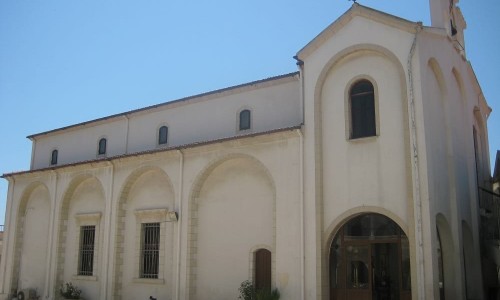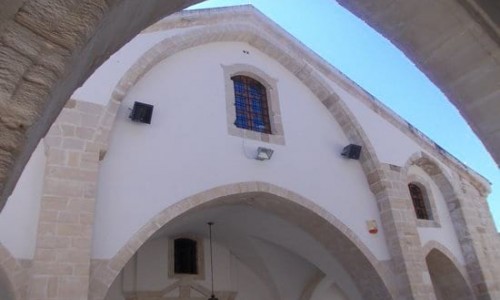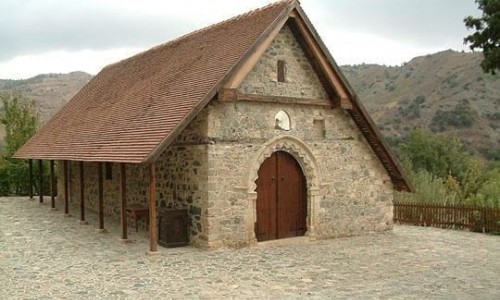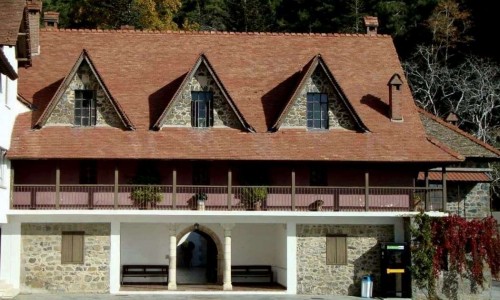The Monastery of Saint Georgios the Spilaion
Hidden among the quiet hills, rocky outcrops, and carob trees of western Limassol, the Monastery of Agios Georgios ton Spileon is one of Cyprus’ most atmospheric and unusual monastic sites. Unlike monasteries that were founded around large churches or royal endowments, this one began with something far simpler and much older: a cave regarded by the local people as holy ground for generations.
Today, the monastery stands at the meeting point of three communities—Erimi, Kolossi, and Ypsonas—yet it feels surprisingly secluded. Visitors often describe it as a place where the modern world seems to fall away, replaced by the stillness of an older spiritual landscape.
Hidden among the quiet hills, rocky outcrops, and carob trees of western Limassol, the Monastery of Agios Georgios ton Spileon is one of Cyprus’ most atmospheric and unusual monastic sites. Unlike monasteries that were founded around large churches or royal endowments, this one began with something far simpler and much older: a cave regarded by the local people as holy ground for generations.
Today, the monastery stands at the meeting point of three communities—Erimi, Kolossi, and Ypsonas—yet it feels surprisingly secluded. Visitors often describe it as a place where the modern world seems to fall away, replaced by the stillness of an older spiritual landscape.
A Monastery Born from a Cave
The heart of the monastery is a natural cave carved into the hillside. For many decades, villagers from the surrounding area kept icons inside it, lit oil lamps, and visited regularly to ask for Saint George’s help. It was known simply as “the cave of Saint George,” and in many ways it functioned as a small informal chapel long before anything official was built around it.
Eventually, people from the nearby villages decided to clear the cave of soil, stones, and debris to make it easier for pilgrims to enter. During this cleaning work, they discovered something remarkable: beneath the earth was a proper, structured space—complete with a small carved apse, a defined floor, and evidence that the cave had once been shaped deliberately for worship. This suggested that its use as a holy place dated back far earlier than anyone remembered, possibly to an early hermit settlement or a tiny Byzantine-era chapel.
Over time, as devotion grew and more visitors arrived, the decision was made to formalize the site and create a full monastery around the sacred cave.
Architecture and Atmosphere
Approaching the monastery today, the first impression is one of calm. A courtyard, monastic buildings, a bell tower, and the main church (katholikon) all form a gentle architectural frame around the historic cave.
The main church follows the familiar lines of Cypriot monastic architecture—stone walls, tiled roofs, elegant arches, and a soft, warm palette that blends naturally with the surrounding landscape. The buildings are well kept and have been expanded over recent years, but none of them overwhelm the ancient character of the cave.
Inside the cave chapel, the atmosphere changes completely. The cool rock walls, the glow of candlelight, and the simplicity of the carved apse create a sense of direct continuity with the island’s early Christian traditions. Icons, vigil lamps, and small offerings from visitors line the walls, reminding anyone who enters that this is a living place of prayer.
The Holy Spring
Just north of the cave lies a natural spring long known to villagers as “Saint George’s fountain.” For generations, shepherds, farmers, and children playing among the terraces would stop here to drink its cold, clear water. Many locals consider it holy water, a natural blessing tied to the monastery’s longstanding devotion.
The presence of a life-giving spring beside a cave shrine is deeply rooted in Orthodox tradition. In many such places, the spring becomes an inseparable part of the sacred landscape—offering refreshment, healing, and symbolic purification.
Spiritual Life and Feast Days
The monastery is dedicated to Saint George the Trophy-Bearer, one of the most beloved saints in the Orthodox world. Two major feast days are celebrated each year:
23 April – The main feast of Saint George.
23 November – A secondary commemoration that has become part of local tradition.
On these days, the monastery becomes lively and full of movement. People from the surrounding villages and from across Cyprus gather for liturgy, visit the cave, and collect water from the spring. The courtyards and pathways fill with families, visitors, candles, and offerings—reviving the long tradition of pilgrimage that has sustained the site for centuries.
Outside the feast days, the monastery remains a place of quiet spiritual retreat. Small services, vigils, and monastic prayers take place throughout the year, preserving the rhythm of contemplative life.
A Link Between Past and Present
One of the most striking qualities of Agios Georgios ton Spileon is how naturally it bridges centuries of Cypriot history. The cave shows signs of early devotion; the spring recalls the simple rural life of the past; the modern monastery brings renewed vitality, structure, and care.
The communities of Erimi, Kolossi, and Ypsonas continue to feel a strong connection to the monastery. Many older residents remember visiting the cave before the monastery was built, drinking from the spring after long days in the fields, or lighting candles for protection and blessing. Even today, the monastery serves not just as a religious site but as a shared memory of the area’s identity.
Why the Monastery Matters
Agios Georgios ton Spileon may not be the largest monastery in Cyprus, but it is one of the most evocative. It embodies:
Deep continuity of worship, stretching from early hermits to modern pilgrims.
A uniquely Cypriot blend of nature and spirituality, where caves, springs, and hillsides become places of prayer.
Community heritage, preserving the stories and traditions of generations.
The revival of monastic life, an ongoing trend in Cyprus where historic shrines are being restored with care.
Visitors who take the time to explore the cave, sit in the courtyard, or walk the paths around the spring often leave with a sense of peace and connection—an experience that feels timeless.







